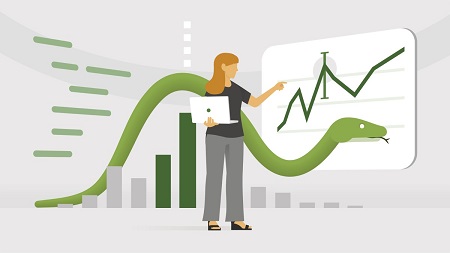
English | MP4 | AVC 1280×720 | AAC 44KHz 2ch | 0h 58m | 150 MB
Data is everywhere. It’s fundamental to your business process. It allows you to make sound, well-informed decisions driven by evidence, not just conjecture. But how should you represent it? The answer depends, especially when you’re working with stakeholders who don’t have a technical background. That’s where Dash comes in. It’s a powerful and easy-to-use data visualization tool that can help you make optimal strategic decisions.
In this course, instructor Robin Andrews gives you an overview of everything you need to know to get started using Dash with Python. Discover how to build powerful and attractive data visualizations. Learn about creating plots, styling applications, and adding user interactivity to cultivate more responsive, data-driven relationships. Robin explores strategies to help you get the most out of the Dash experience, and shows you how to deploy your Dash apps to the cloud using Heroku.
Table of Contents
Introduction
1 Create interactive data visualizations with Python
2 What you should know
1. Introduction to Dash
3 Why Dash
2. Building Your First Dash Application
4 Setting up your local development environment
5 Hello World with Dash
6 A basic example of a Dash application
3. Styling Your Dash Applications
7 Plotly Express graph configuration
8 Using style arguments for CSS
9 Adding external assets to your applications
4. Making Dash Applications Interactive
10 How Dash event callbacks work
11 Adding a drop-down menu
12 Using callbacks to power drop-down menus
13 Using date range selectors
5. How to Deploy Your Dash Applications
14 Deploying your app to Heroku
15 Making changes to an existing app
Conclusion
16 Dash Enterprise Design Kit dashboards
Resolve the captcha to access the links!